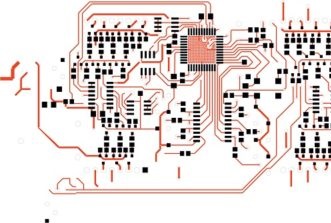This website uses cookies so that we can provide you with the best user experience possible. Cookie information is stored in your browser and performs functions such as recognising you when you return to our website and helping our team to understand which sections of the website you find most interesting and useful.
Silent Success: Antimony Alloy Reduces Noise in 1.55μm InGaAs Photodiodes
Phlux, a spin-out from the University of Sheffield, has recently unveiled its first product, a family of 1,550nm avalanche photodiodes (APDs) called Aura. These infrared devices are constructed using antimony alloy modified InGaAs, resulting in sensors that can be operated with APD gains up to 120. This allows for the amplification of even the smallest signals above the noise floor of a connected trans-impedance amplifier. Additionally, the Aura APDs offer rapid overload recovery, enabling the detection of weaker secondary pulses that closely follow a large pulse.
The Aura APD 200 and Aura APD 80
The Aura family consists of two variants: the Aura APD 200 with a 200µm optical aperture, and the Aura APD 80 with an 80µm aperture. According to Phlux, these devices exhibit a responsivity of 0.98A/W at 1,550nm and a spectral range of 950 – 1,700nm. The excess noise factor is measured at 1.86 at an avalanche gain of 40, or 1.08 at a gain of 10.
When considering the Aura APD 200 at a gain of 10, it achieves a noise equivalent power of 17fW/√Hz, a capacitance of 2.4pF, and a cut-off frequency of 0.7GHz. On the other hand, the Aura APD 80 offers figures of 11.1fW/√Hz, 0.6pF, and 1.8GHz, respectively. These characteristics make the Aura APDs suitable for lidar applications, as they allow for the use of lower-power lasers compared to previous APDs. This, in turn, reduces the size and weight of the overall system.
Wide Operating Range and Packaging Options
The Aura APDs are designed to operate within a temperature range of -55 to -65°C, with a breakdown voltage of -65V. However, they can also function in temperatures ranging from -40 to +85°C without any performance degradation. The packaging options for the Aura APDs include a 3 x 3mm surface-mount, side-emitting surface-mount chip-on-sub-mount (2mm high by 4mm by 2mm+die+bondwires), or a 3-pin TO-46 package. Phlux also offers bare die versions of the APDs, which are built to MIL-STD-883 standards for enhanced durability.
Applications and Background
The Aura APDs find applications in various fields, including telecommunications, laser rangefinders, imaging, spectroscopy, gas sensing, and optical time domain reflectometers. Phlux Technology, established in 2020 and based in Sheffield, UK, has developed its intellectual property over eight years of research at Sheffield University. In December 2022, the company secured £4m in seed funding, led by Octopus Ventures, to support its innovative endeavors.













